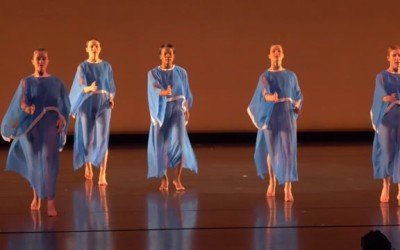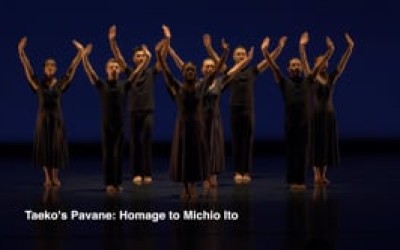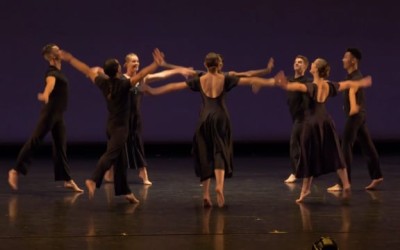Michio Ito was part of a boundary-crossing generation that brought about the literary, musical, and artistic breakthroughs of modernism and the eclectic beginnings of American modern dance.
eclectic beginnings of American modern dance.
In the early years of the 20th century, Japanese choreographer Michio Ito devised a movement vocabulary that included ten symbolic gestures of the arms which he compared to the 12 notes on a piano. He used these positions with variations of plane, angle, context, and rhythm to present an endless variety of dances. His emphasis was on the distillation of emotion, inner concentration, and incisive gesture.
Preserving and honoring the work of the founders and pioneers of early 20th century modern dance has been central to the mission of Repertory Dance Theatre. We are proud to help preserve the method and the choreography of Michio Ito. His work is a cherished part of RDT’s dance archive.
Performance of these works was authorized by the Michio Ito Foundation directed by Michelle Ito, granddaughter of Michio Ito who has given permission for RDT to be the U.S. repository for the Ito technique and repertory.
Works by Michio Ito
Lesson Plans for Michio Ito
Dance History Lesson:
Repertory Dance Theatre is proud to be the US repository for the works of Michio Ito (1892 – 1961). Twice, RDT has worked with Ito master teachers from Japan learning Ito’s technique, style, and choreography.
Below, you will find a 20-minute documentary that introduces this lost modern dance pioneer.
Following the video are some discussion questions. More Ito lesson plans are being developed and will be offered once they have been created.
Discussion Questions
- What are the ways Michio Ito fused ideas from Eastern & Western cultures?
- Can you think of any artists working today who fuse artistic ideas from various cultures, movement styles, and backgrounds? Who?
- How do the movement and dance styles we study today differ from the movement Ito used in his choreography?
- From the few clips of his choreography, what lines, shapes, and forms do you see used again and again? How would describe his movement style and choices?




